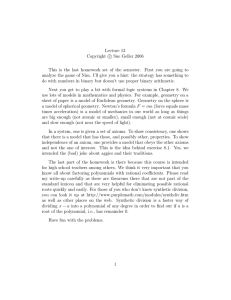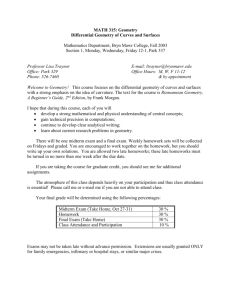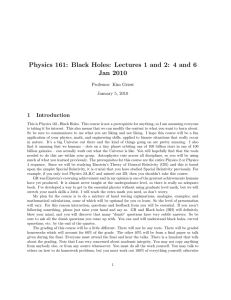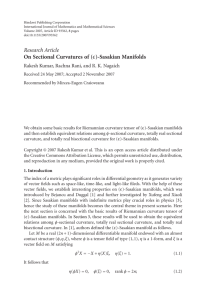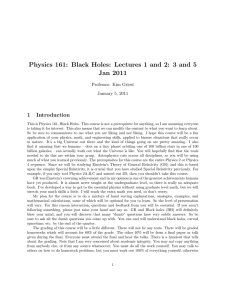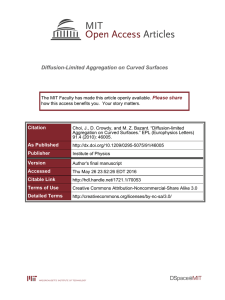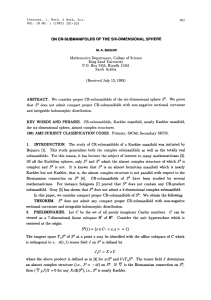INTRODUCTION ON DIFFERENTIAL GEOMETRY
advertisement
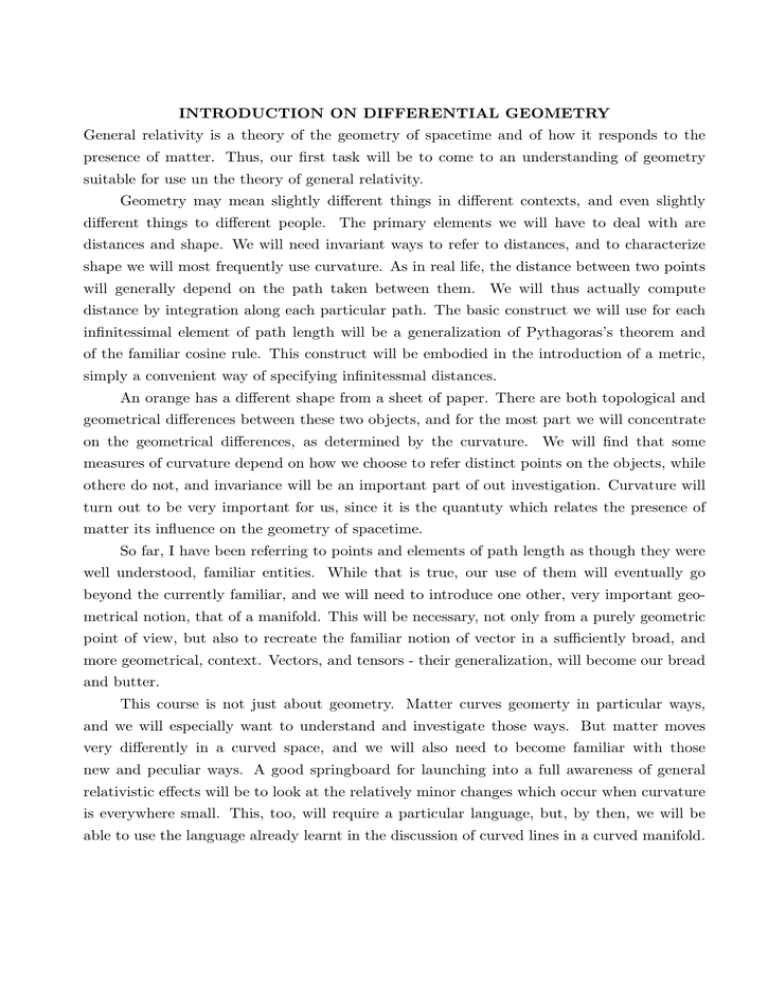
INTRODUCTION ON DIFFERENTIAL GEOMETRY General relativity is a theory of the geometry of spacetime and of how it responds to the presence of matter. Thus, our first task will be to come to an understanding of geometry suitable for use un the theory of general relativity. Geometry may mean slightly different things in different contexts, and even slightly different things to different people. The primary elements we will have to deal with are distances and shape. We will need invariant ways to refer to distances, and to characterize shape we will most frequently use curvature. As in real life, the distance between two points will generally depend on the path taken between them. We will thus actually compute distance by integration along each particular path. The basic construct we will use for each infinitessimal element of path length will be a generalization of Pythagoras’s theorem and of the familiar cosine rule. This construct will be embodied in the introduction of a metric, simply a convenient way of specifying infinitessmal distances. An orange has a different shape from a sheet of paper. There are both topological and geometrical differences between these two objects, and for the most part we will concentrate on the geometrical differences, as determined by the curvature. We will find that some measures of curvature depend on how we choose to refer distinct points on the objects, while othere do not, and invariance will be an important part of out investigation. Curvature will turn out to be very important for us, since it is the quantuty which relates the presence of matter its influence on the geometry of spacetime. So far, I have been referring to points and elements of path length as though they were well understood, familiar entities. While that is true, our use of them will eventually go beyond the currently familiar, and we will need to introduce one other, very important geometrical notion, that of a manifold. This will be necessary, not only from a purely geometric point of view, but also to recreate the familiar notion of vector in a sufficiently broad, and more geometrical, context. Vectors, and tensors - their generalization, will become our bread and butter. This course is not just about geometry. Matter curves geomerty in particular ways, and we will especially want to understand and investigate those ways. But matter moves very differently in a curved space, and we will also need to become familiar with those new and peculiar ways. A good springboard for launching into a full awareness of general relativistic effects will be to look at the relatively minor changes which occur when curvature is everywhere small. This, too, will require a particular language, but, by then, we will be able to use the language already learnt in the discussion of curved lines in a curved manifold.




